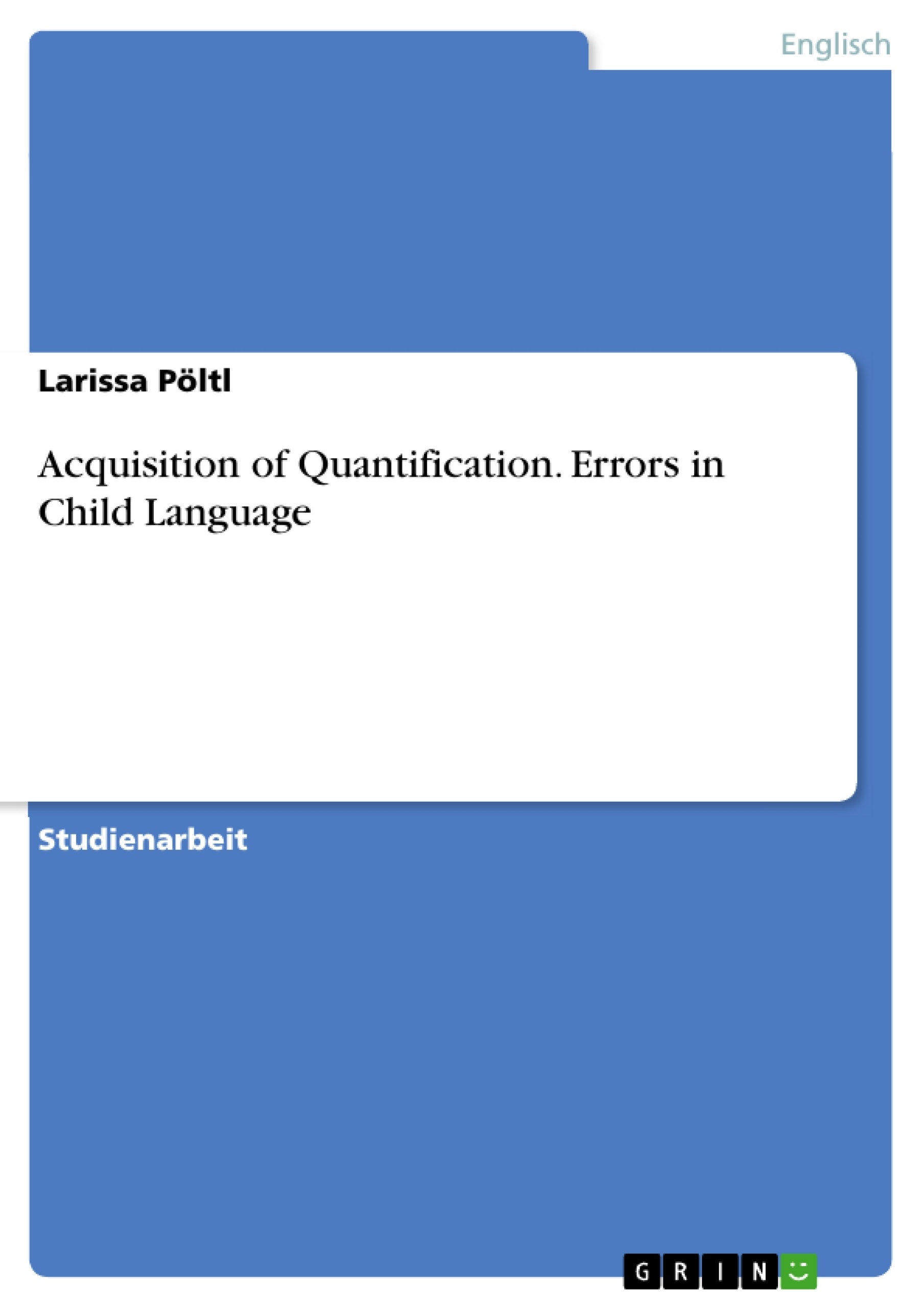The acquisition of quantifiers has always been a widely discussed topic in linguistics. Do children really have access to an adult interpretation from birth on or do they need to learn it throughout their childhood?
The main point hereby is that children seem to make a lot of mistakes while answering questions about quantification. They don’t seem to understand the meaning of every and all. These two quantifiers will be in the focus of this paper as well, because they are the most difficult ones and the ones where children make the most errors.
Some argue that children simply prefer a different interpretation than adults do or that they just have an inaccurate knowledge of the adult version. Others argue that children cannot distinguish part-whole relationships or that the position of the quantifier in the sentence is of importance. It could also be a parametric variation across languages. Often, linguists blame a wrong syntax to semantics mapping as well.
Table of Contents
1. Introduction
2. Quantifier Sentences and Prerequisites
2.1 What Do Children Know?
2.2 Errors in Child Language
3. The Symmetrical Account
3.1 Problems With The Symmetrical Account
4. Experience-based Approach
5. Felicity and Plausibility
6. Conclusion
7. Bibliography
- Arbeit zitieren
- Larissa Pöltl (Autor:in), 2013, Acquisition of Quantification. Errors in Child Language, München, GRIN Verlag, https://www.grin.com/document/339559
-

-

-

-
Laden Sie Ihre eigenen Arbeiten hoch! Geld verdienen und iPhone X gewinnen. -

-
Laden Sie Ihre eigenen Arbeiten hoch! Geld verdienen und iPhone X gewinnen. -

-
Laden Sie Ihre eigenen Arbeiten hoch! Geld verdienen und iPhone X gewinnen. -

-
Laden Sie Ihre eigenen Arbeiten hoch! Geld verdienen und iPhone X gewinnen. -

-
Laden Sie Ihre eigenen Arbeiten hoch! Geld verdienen und iPhone X gewinnen. -

-
Laden Sie Ihre eigenen Arbeiten hoch! Geld verdienen und iPhone X gewinnen. -

-
Laden Sie Ihre eigenen Arbeiten hoch! Geld verdienen und iPhone X gewinnen.

